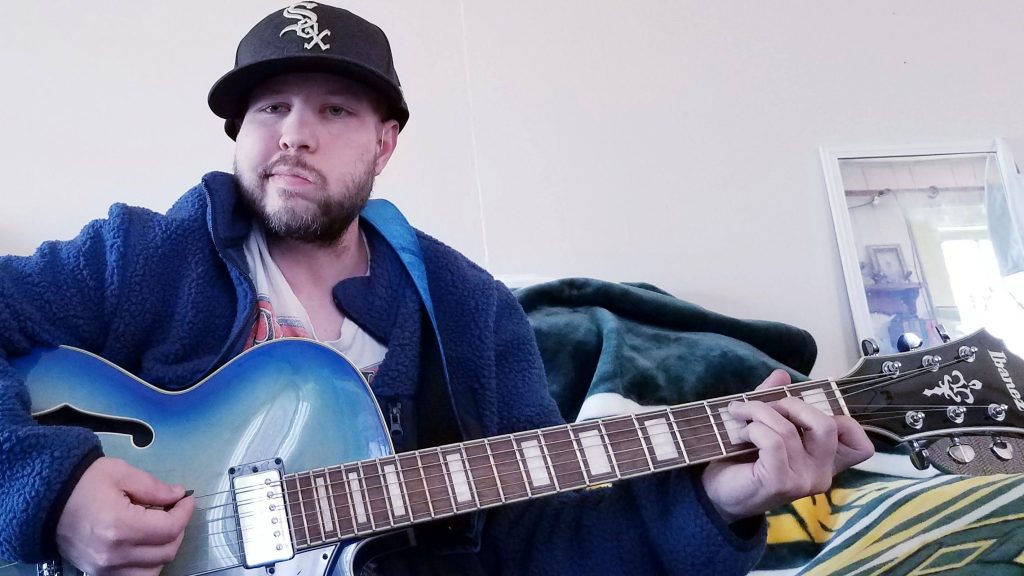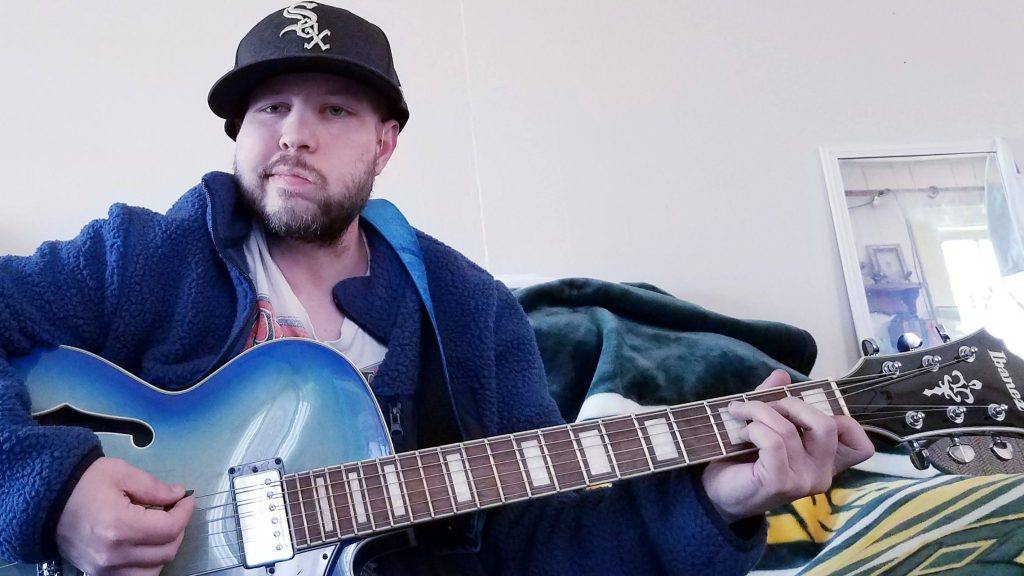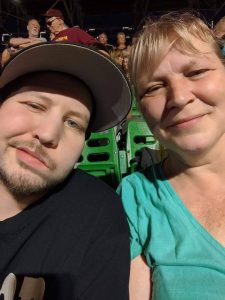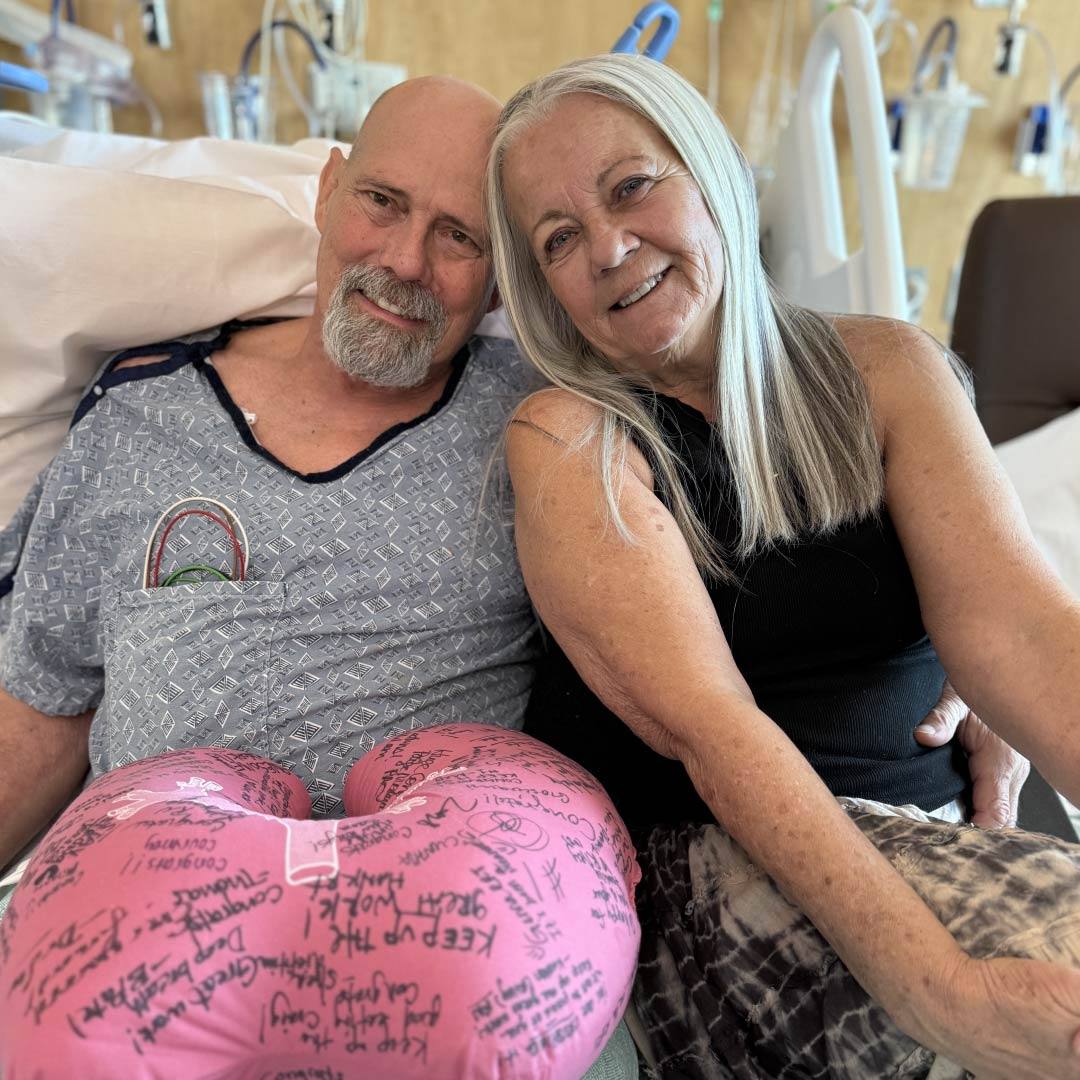
Alex Kraatz is a creative, determined optimist who loves playing the guitar, taking photos, and spending time with his family. Softspoken with a gentle nature, Alex’s mettle isn’t immediately obvious. But there is no doubt, Alex is a fighter to the core.
Just 34 years old, Alex has survived not one, but two different types of brain tumors. Both tumors, which occurred 20 years apart, had the capacity to kill Alex. Surrender, however, isn’t in Alex’s wheelhouse.
Nor is it in his mother’s. Linda knew there was a better treatment path for Alex when his local care providers couldn’t offer therapy needed to treat Alex’s tumors. Fueled by an unrelenting desire to save her child, Linda did not hesitate to travel to Mayo Clinic, which held the promise of a lifesaving remedy.
At 9 years old and again at age 29, Alex underwent brain surgery, radiation, and chemotherapy at Mayo Clinic in Rochester, Minnesota, to treat the tumors. As part of treatment for Alex’s second tumor, genetic testing performed at Mayo Clinic Laboratories revealed characteristics that helped Alex’s care team develop a targeted treatment plan.
“He is such a unique case,” says neuro-oncologist Michael Ruff, M.D., who treated Alex. “It’s so unusual to have this sort of situation where you have the second tumor in the same location that is managed quite differently. An adult medulloblastoma, there’s less than one in a million chance of that, and a glioblastoma potentially coming from the childhood tumor has to be far less than that.”
Neuro oncological testing, both a chromosomal microarray and an expanded gene panel, performed in 2017 on Alex’s second tumor revealed the lesion was a grade 4 glioblastoma. But that is not all testing showed.
“They did a test called MGMT, which looks at methyltransferase, and he was positive for that,” says Robert Jenkins, M.D., Ph.D., a Mayo Clinic pathologist and cancer geneticist who helped consult on Alex’s testing. “This is a test done on all glioblastoma and if they are positive, they have a chance of responding to a specific kind of chemotherapy.”
That testing helped Alex’s care team choose a treatment plan that gave him the best chance to survive.
While the medical savvy of Alex’s care team and cutting-edge testing and treatment maximized his success, Alex’s attitude was the force that has pulled him through his daunting medical journey, Linda says.
“He was always up to the challenge,” she says. “He was the inspiration for the rest of us.”
Surviving and thriving
Alex’s journey hasn’t been easy. The surgery required to treat his first tumor, a medulloblastoma, resulted in brain tissue damage that altered Alex’s appearance and abilities.
“We did learn at that time that he was going to have partial facial paralysis because the muscles were disturbed,” Linda says. “One eye didn’t close for a long, long time. He lost his balance, some of his fine motor skills, and some IQ and memory. But he was alive, and that’s what really mattered to us.”
Following surgery, Alex received six weeks of radiation to his brain and spinal column followed by two weeks of targeted radiation to the tumor’s location in his brain. The radiation treatments, which required Alex to wear a protective mask, were intense, Alex says. “I remember being really worried during the radiation procedure, and when I closed my eyes all I could see was lightning.”
During that time period, Alex also relearned how to walk and take care of himself.
“It was a matter of him having to get used to his body again,” explains Linda, adding that one of the hardest parts of Alex’s journey was coming to terms with his new appearance.
“He was received differently because his face was different,” Linda says. “Even some of his teachers didn’t get it. At the time, in some ways it was like grieving the loss of one child and trying to accept a new child.”
Alex believes optimism has been an important part of managing his challenges. “I didn’t always have a good outlook, but it’s helped me to deal with more over the years,” he says.
Two years after his initial tumor diagnosis, Alex’s family moved from their hometown in South Dakota to Minneapolis, where Alex started attending a much larger school. With more opportunities in arts and music, Alex flourished. He joined the track team and ran long distance events. Alex and some friends started a band. By graduation, Alex was attending mainstream classes and had been awarded a scholarship for photography at Minneapolis Community and Technical College.
Alex Kraatz is a creative, determined optimist who loves playing the guitar, taking photos, and spending time with his family.
Through it all, Alex received regular follow-up imaging, none of which showed the tumor was threatening to return. At the 20-year anniversary of this diagnosis and treatment, the family celebrated.
“They told me 20 years is the mark where you consider yourself to be cancer free, and we had a party,” Linda says.
Just weeks after that milestone, Alex’s head began to hurt. His neck started to ache. Vomiting followed. “He started throwing up this clear fluid and the minute I saw it, I knew,” Linda says.
Devastation, then hope
A visit to an area oncologist confirmed Linda’s fears. Alex’s tumor had returned.
“The scan he showed us had what looked like a hurricane in the back of Alex’s head; it was just huge,” Linda says. “They did a biopsy and found it was glioblastoma. The surgeon said he thought he could get 60% to 70% of the tumor because it was so close to his brain stem, and with the surgery and chemotherapy he could live another eight months. They were preparing us for the end and didn’t give us a lot of hope.”
So Linda called Mayo Clinic.
“THE DOCTOR AT THE OTHER END OF THE LINE SAID, ‘WE’LL LOOK AT THIS AND GET BACK TO YOU,’” LINDA SAYS. “WITHIN HOURS THE PHONE RANG, AND IT WAS DR. (PAUL) BROWN, WHO TOLD US TO HOLD THE PRESSES AND STOP WHAT WE WERE DOING. HE SAID MAYO HAS PROTON BEAM RADIATION AND SURGEONS WHO THINK THEY CAN DO BETTER.”
Linda says the family cancelled everything and immediately went to Mayo Clinic. “We walked back into Mayo Clinic and it was like being home,” she says. “And here we are, five years later.”
Within days, Alex underwent his second brain surgery. Performed by neurosurgeon Terry Burns, M.D., Ph.D., the surgery resulted in a 97% resection of the tumor. Following the operation, laboratory testing revealed surprising characteristics about the tumor.
A chromosomal microarray (Mayo ID: CMAPT) and an expanded gene panel (Mayo ID: NONCP) looked for copy number variations, and genetic mutations and rearrangements. Based on those evaluations, Alex’s team confirmed his second tumor was a grade 4 glioblastoma — not a recurrent medulloblastoma, which requires a completely different treatment regimen.
While it is impossible to say with certainty that the treatment Alex received for the first tumor is related to the second, there has been a growing recognition among neuro oncologists that glioblastoma can develop secondary to prior therapy.
“Once cells have been treated with radiation and chemotherapy, those cells are pretty damaged,” Dr. Jenkins says. “They may not survive very well in the milieu of the brain or may just sit there not dying and then something else happens, which gives the cells more of a survival advantage and a secondary tumor can grow back.”
Because different types of glioblastoma respond differently to therapy, an MGMT promoter methylation (Mayo ID: MGMT) was performed to gauge the tumor’s susceptibility to treatment.
“There are patients like Alex who have remarkable responses when their secondary glioma, or glioblastoma, is treated with chemotherapy and radiation, and it seems he is in that group,” Dr. Jenkins says.
Based on those test results, Alex’s care team started him on proton beam radiation. He was also prescribed chemotherapy pills. Finally, Alex received Optune therapy, which is a wearable, portable treatment that creates electric fields, known as tumor treating fields, that disrupt cancer cell division.
To date, follow-up imaging of Alex’s brain — which he typically receives every four months at Mayo Square in Minneapolis — have not shown any new cancer growth.
According to Dr. Ruff, glioblastoma survival beyond five years is achieved by about 13% of patients. For Alex to have survived a childhood brain tumor and then beat a second is remarkable.
“THIS IS A VERY RARE OCCURRENCE,” DR. RUFF SAYS. “THAT ALEX HAS RETURNED TO THE LEVEL OF FUNCTION THAT HE HAS WHERE HE’S STILL PLAYING DRUMS AND FULLY INDEPENDENT IN HIS DAY-TO-DAY LIFE, I’M JUST INCREDIBLY IMPRESSED WITH THIS YOUNG MAN. HE HAS SUCH A STRONG SPIRIT.”
This story first appeared on the Mayo Clinic Laboratories blog.
Related Articles









